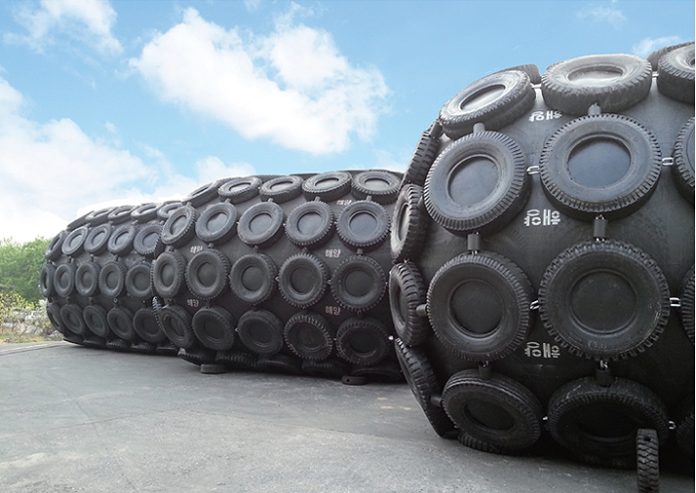Pneumatic fenders are very similar to conventional fenders in their work, but the key difference lies in their construction. Where traditional fenders use rubber or another flexible material to absorb impact, the pneumatic Yokohama fender uses air pressure and metal plates to absorb shock. This allows you to maneuver your boat more efficiently at the port because you won’t have to worry about getting hit by boat traffic and damaging your boat.
In this article, we’ll discuss what are pneumatic fenders, how they function, what are their benefits, and some of their useful applications. So, let’s get started.
What Are Pneumatic Fenders?
A pneumatic fender is a particular type of marine fender made from durable rubber and inflated for extra protection against impact. While traditional lenders are often made from plastic or other synthetic materials, which can easily cause damage to a boat’s hull or propellers, pneumatic fenders inflate at high pressure, providing much better protection. In some cases, they also include an outer shell that makes them more visible in low light conditions than traditional foam-only versions.
How do Pneumatic Fenders work?
Pneumatic fenders are designed to be connected to a pneumatic system such as compressed air or other gases. The compressed air runs through pipes and acts like a force field around your boat. As it detects contact with another vessel, it will create an energy that acts as a shock absorber for both parties involved. Unlike conventional bumpers, pneumatic fenders can absorb impacts of different sizes and transfer all impact forces so that neither party sustains any damage.
What Are The Benefits Of Pneumatic Fender?
Good Performance at Inclined Berthing
Pneumatic fenders are usually not used directly alongside steel hulls because they can damage paint or even rust steel under extreme conditions. However, they are regularly used in berthing operations in ports where steep berths and inclines up to 17 degrees are standard. A fender must perform well at these angles because it could transfer all of its force into one ship and cause significant damage if it fails to absorb a collision.
Safety and Reliability
Pneumatic fenders are almost identical to solid rubber fenders. The most notable difference is that pneumatic fenders have air chambers instead of solid rubber and have a significant impact on efficiency at ports, docks, and other areas where large objects or people frequently come into contact with floating structures.
Stronger Against the Shearing Force
A pneumatic fender is an inflatable dam that’s usually fitted on a ship or boat. It protects other vessels from contacting wharves and piers, particularly when they’re making fast turns and moving at high speeds. Additionally, these floating bumpers protect docks from damage by preventing ships from rubbing against them during docking. As such, pneumatic fenders are often referred to as shock absorbers for boats.
Applications of Pneumatic Fenders
- Pneumatic fenders are used in commercial marine settings and can be attached directly to a vessel’s hull.
- Pneumatic fenders are typically used on vessels in busy port areas.
- They provide a simple, safe way for ships to stay close to each other without the risk of collision.
- They have been used for years with great success in numerous ports around the world.
Conclusion
Pneumatic fenders use compressed air to cushion ships when they dock. Ship operators and crew members alike need to understand how pneumatic fenders work because there is no room for error when docking such massive vessels. A pneumatic fender’s failure can damage ships, slipways, and adjacent infrastructure or personnel. This can be avoided by simply understanding how pneumatic fenders operate and learning what factors influence their performance.











